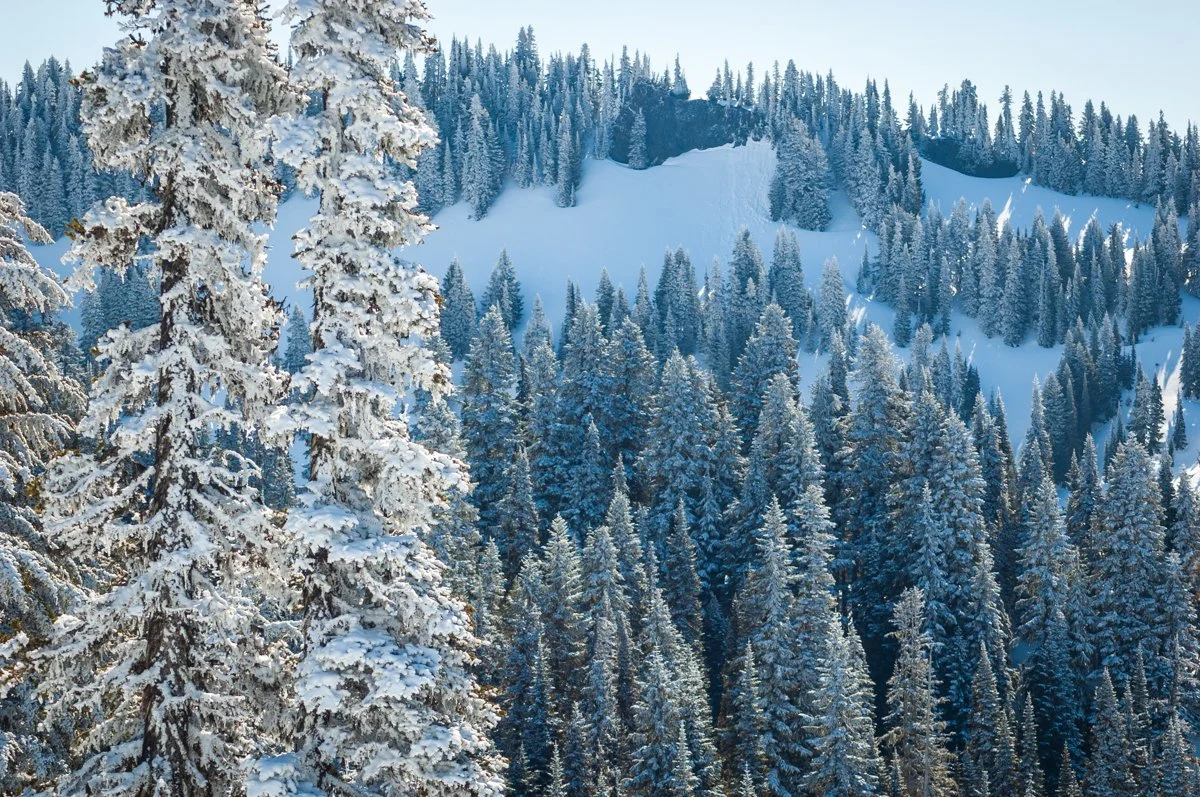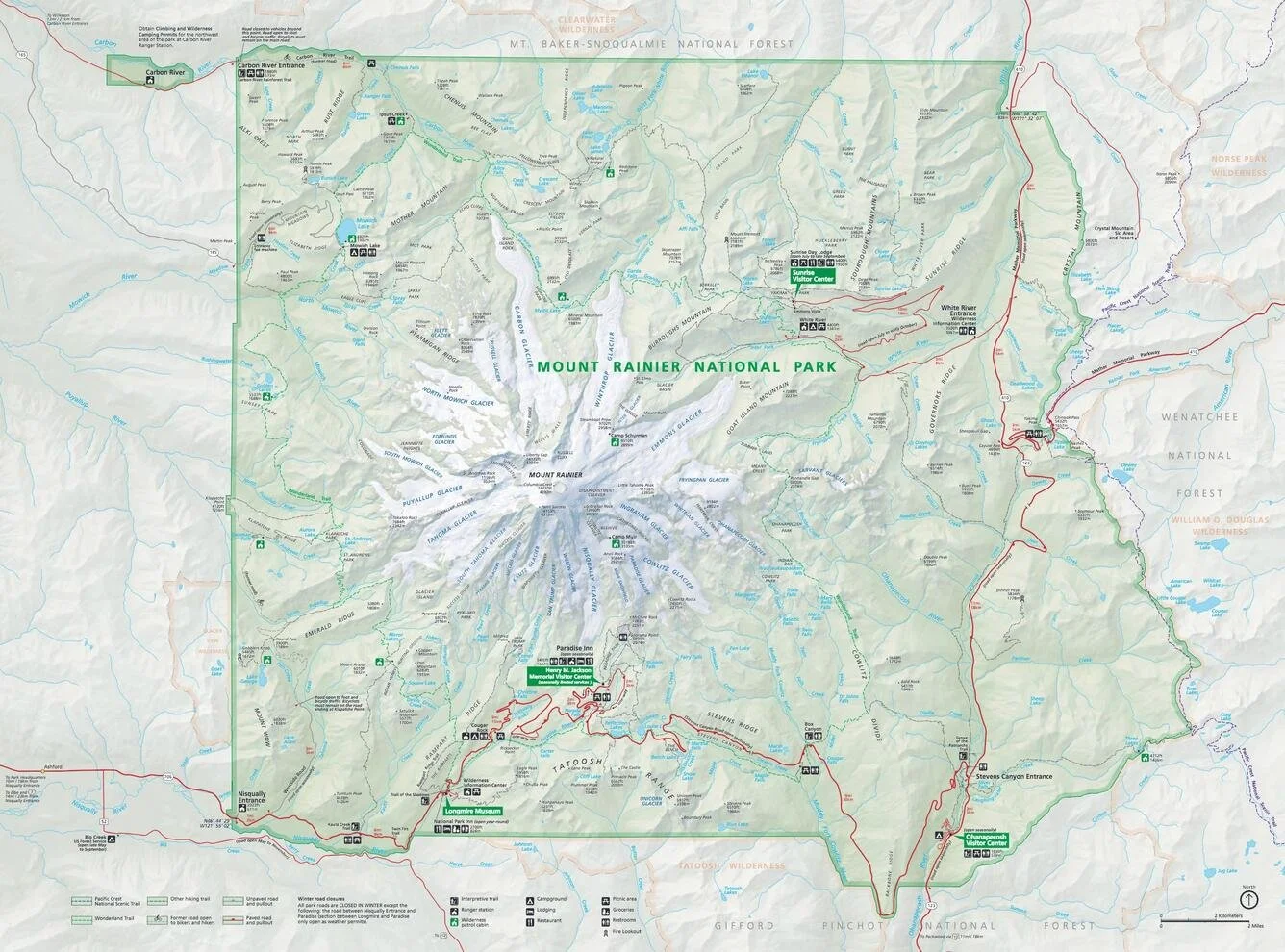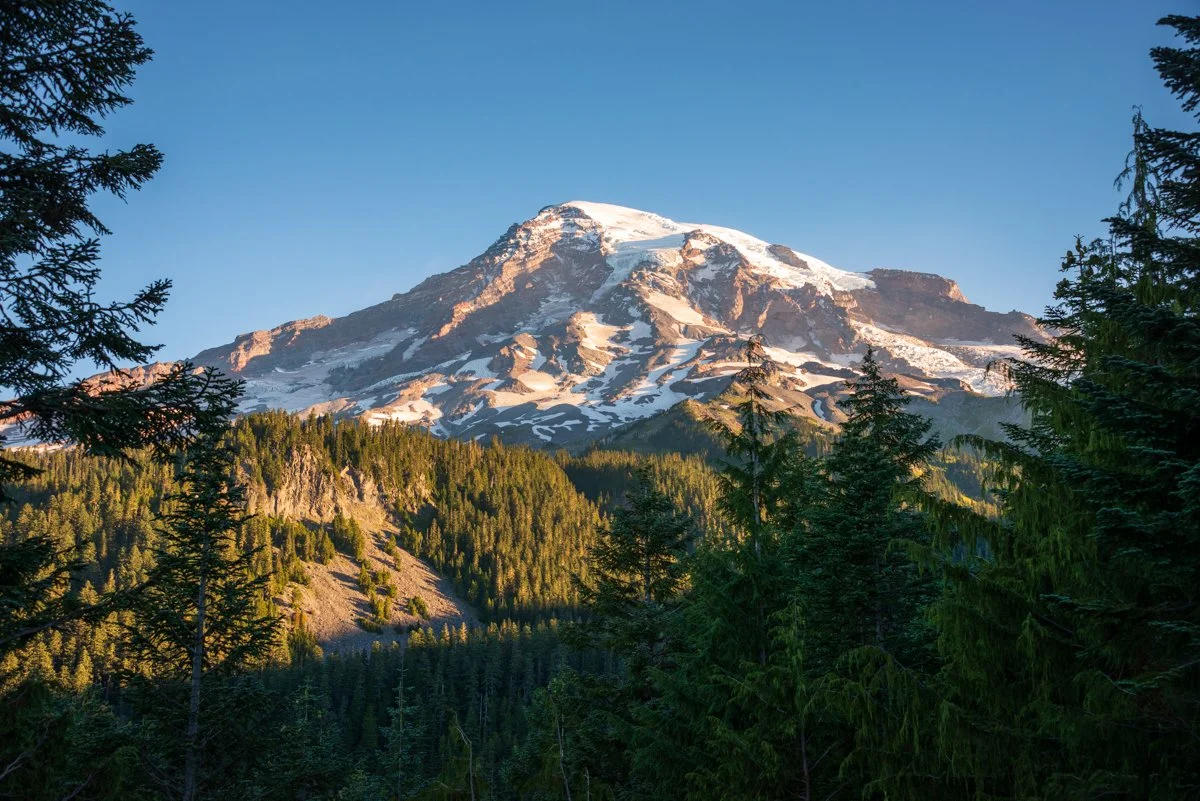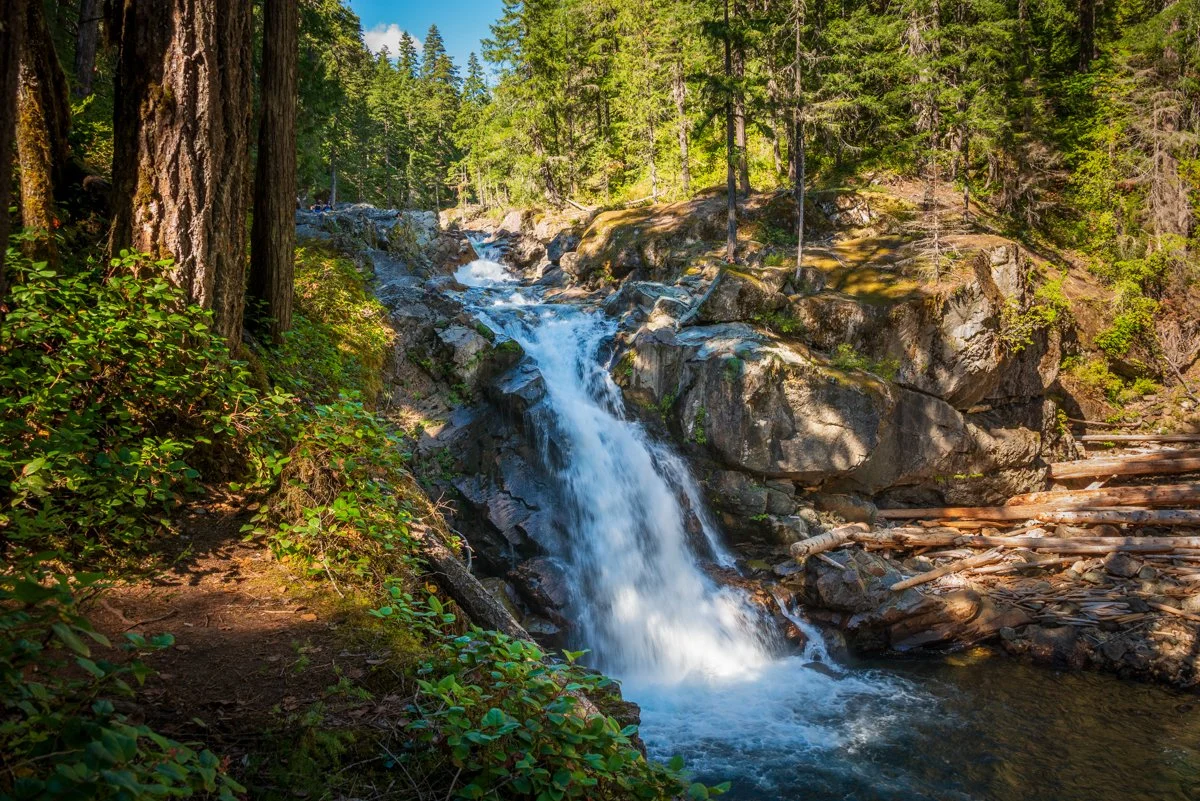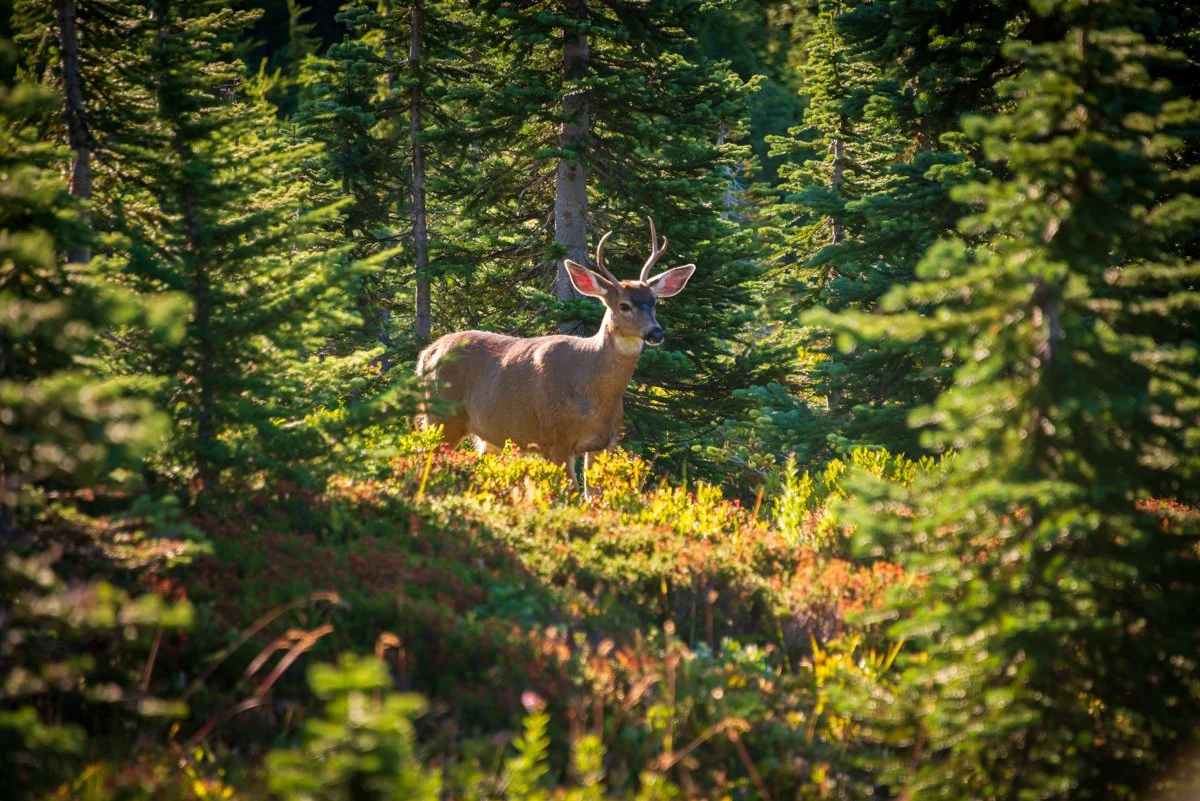Mount Rainier National Park (Washington)
Rising majestically above the surrounding landscapes of Washington State, Mount Rainier National Park is a stunning sanctuary of alpine wilderness, ancient forests, and spectacular glaciated peaks. Dominated by the imposing stratovolcano Mount Rainier, the park offers visitors a breathtaking display of the natural beauty and geological wonder that define the Pacific Northwest.
Established as a national park in 1899, Mount Rainier National Park encompasses over 236,000 acres of diverse ecosystems, ranging from lush old-growth forests to alpine meadows awash in colorful wildflowers. At the heart of the park, Mount Rainier stands as the highest peak in the Cascade Range, reaching an elevation of 14,410 feet. This iconic stratovolcano, capped by more than 25 glaciers, is both an awe-inspiring sight and an irresistible challenge for climbers and mountaineers.
The park's varied habitats support an impressive array of plant and animal life, including species such as Roosevelt elk, black bears, and mountain goats. Birdwatchers will delight in the more than 180 species of birds that call the park home, including the elusive gray jay and the vibrant western tanager.
Mount Rainier National Park offers a wide range of recreational activities that allow visitors to immerse themselves in its pristine landscapes and abundant natural beauty. Over 260 miles of trails traverse the park, providing opportunities for hikers and backpackers of all skill levels to explore old-growth forests, subalpine meadows, and glacial valleys. In the winter months, the park transforms into a snowy paradise, perfect for snowshoeing, cross-country skiing, and sledding.
The nearby communities of Ashford, Enumclaw, and Packwood serve as gateways to Mount Rainier National Park, offering a variety of accommodations, dining options, and local attractions. These charming towns provide the ideal base from which to explore the park's stunning scenery and experience the grandeur of Mount Rainier.
MUST SEE SITES
Mount Rainier: This iconic peak is the highest in the Cascade Range and offers stunning views of the surrounding wilderness, as well as opportunities for hiking, climbing, and wildlife viewing. Visitors can explore the area by hiking one of the park's trails, attending a ranger-led program, or simply taking in the stunning views of the peak and surrounding landscape.
Paradise: This scenic area offers stunning views of the surrounding wilderness, opportunities for hiking and wildlife viewing, and a unique geological history. Visitors can explore the area by hiking one of the park's trails, attending a ranger-led program, or simply taking in the stunning views of the unique landscape.
Sunrise: This scenic area offers stunning views of the surrounding wilderness, opportunities for hiking and wildlife viewing, and a unique geological history. Visitors can explore the area by hiking one of the park's trails, attending a ranger-led program, or simply taking in the stunning views of the unique landscape.
Nisqually Glacier: This iconic glacier is located on the southern slope of Mount Rainier and offers stunning views of the surrounding wilderness. Visitors can explore the area by hiking one of the park's trails, attending a ranger-led program, or simply taking in the stunning views of the unique landscape.
Grove of the Patriarchs: This unique area features a stand of old-growth trees, some of which are over 1,000 years old. Visitors can explore the area by hiking one of the park's trails, attending a ranger-led program, or simply taking in the stunning views of the unique landscape.
GETTING THERE
The most popular way to arrive at Mount Rainier National Park is by car. The park is located in western Washington state, and can be accessed via several highways. From Seattle, you can take State Route 7 or State Route 167 to State Route 161, which leads directly to the park's entrance.
If you prefer to travel by air, the closest airport to Mount Rainier National Park is the Seattle-Tacoma International Airport, which is located about 80 miles from the park. This airport offers flights from several cities, including Los Angeles, New York, and London.
Once you arrive at Mount Rainier National Park, the best way to get around is by car or by foot. The park is home to several scenic drives and hiking trails, including the Sunrise Road and the Skyline Trail. There are also several campgrounds available for overnight stays, and ranger-led programs and tours are offered throughout the year.
GATEWAY COMMUNITIES
The towns of Ashford, Enumclaw, and Packwood serve as the primary gateway communities to Mount Rainier National Park, offering various accommodations, dining options, souvenir shops, and outdoor recreation equipment rentals.
ACCOMMODATIONS
Visitors can find various lodging options in the surrounding communities, including hotels, motels, and vacation rentals. The park itself features the National Park Inn and Paradise Inn, which provide accommodations within the park. Additionally, there are several campgrounds available within the park, providing tent and RV sites.
CAMPGROUNDS
Mount Rainier National Park has several developed campgrounds, offering tent and RV sites, as well as basic amenities like restrooms, drinking water, and picnic areas. Some campgrounds are available on a first-come, first-served basis, while others require reservations during the busy season, from May through September.
WEATHER/CLIMATE
Mount Rainier National Park has a diverse climate due to its varying elevations, with cool summers and cold winters. Average summer temperatures can range from the 50s to 70s Fahrenheit, while winter temperatures can dip well below freezing. Visitors should be prepared for potential rain, snow, and rapidly changing weather conditions.
RECREATION OPPORTUNITIES
Numerous recreational opportunities await visitors, including hiking, backpacking, wildlife viewing, and mountaineering. The park's most famous attraction is Mount Rainier itself, with various trails offering stunning views of the mountain and its surrounding landscapes. Popular hikes include the Skyline Trail, the Wonderland Trail, and the Burroughs Mountain Trail. Wildlife viewing is popular, with a variety of species such as black bears, mule deer, and numerous bird species inhabiting the area.
VISITOR CENTER
Mount Rainier National Park has several visitor centers, including the Henry M. Jackson Memorial Visitor Center at Paradise, the Sunrise Visitor Center, and the Ohanapecosh Visitor Center. These centers provide information about the park's history, ecology, wildlife, and recreational opportunities. Rangers are available to offer guidance and answer questions. The visitor centers are open daily during the visitor season, with reduced hours and services during the off-season.
THINGS TO KNOW
Entrance Fee: $30 per vehicle (7-day pass), $25 per motorcycle (7-day pass), $15 per person (7-day pass), or $55 for an annual park pass.
Pet Policy: Pets are allowed in campgrounds, picnic areas, and on park roads, but must be leashed and under control at all times. Pets are not allowed on trails, in wilderness, or in public buildings, with the exception of the Pacific Crest Trail.
Hours of operation: Mount Rainier National Park is open 24 hours a day, 7 days a week, with some exceptions for visitor centers and certain facilities. Operating hours can be found on the park's website.
Website: https://www.nps.gov/mora/index.htm
Contact phone number: (360) 569-2211
Address: Mount Rainier National Park, 55210 238th Avenue East, Ashford, WA 98304, United States
